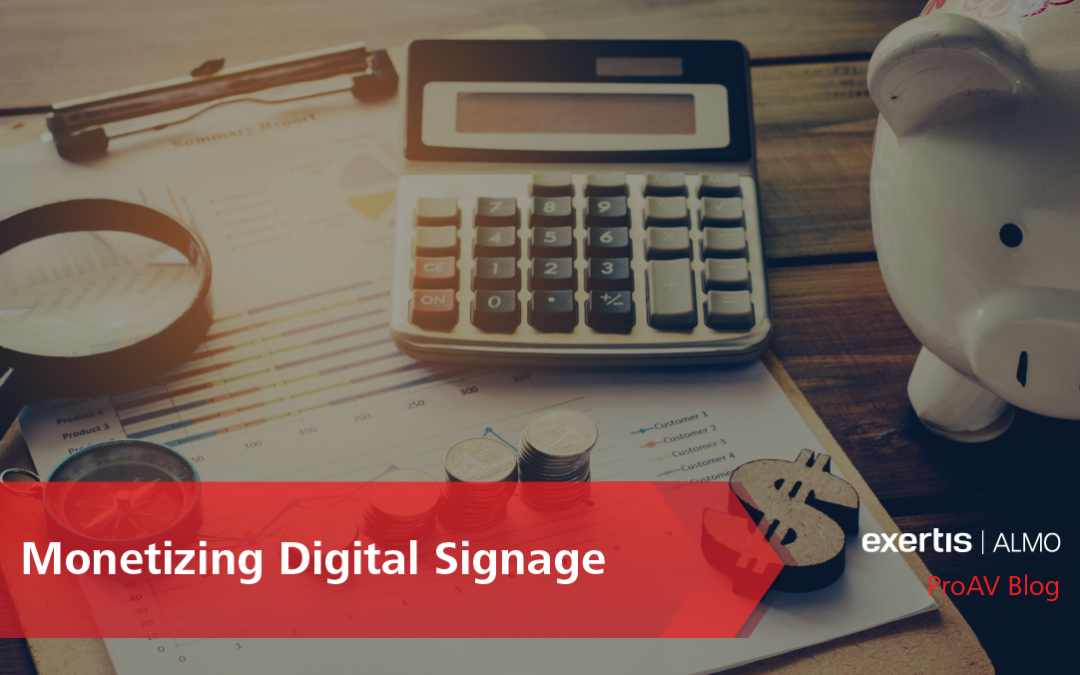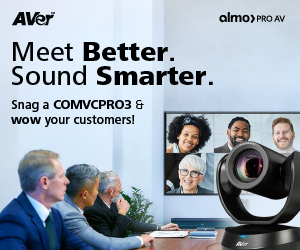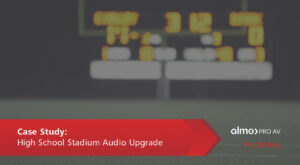As digital signage continues to grow, many Pro AV integrators have made a conscious decision to avoid it. The main reason I’ve been told when discussing the topic is the perception that digital signage is not profitable. After spending time reviewing various integration partners’ digital signage strategy, I agree that the return on investment in time and resources just isn’t there. The problem isn’t necessarily about a lack of revenue available, but rather the digital signage strategy that they’ve employed.
The simple truth is that many pro AV integration firms do not have a true signage strategy. Almost all offer signage products. Great products to boot. Many even have a good understanding of how the signage products function. What they lack is a strategy on how to deploy a successful, and yes, profitable full signage solution for their clients. I believe this to be for one of three reasons. The first, and probably most influential, is their sales team is not compensated for selling, what many would contend is a more difficult sale – a solution with ongoing costs. Another reason that ties into the first, is the misconception that end users won’t see the value associated with an ongoing expense. Lastly, the integrator believes they lack the resources needed to successfully complete such a project.
So, why should you care? After all, coming up with a signage strategy may take some effort, and just because I’m paid to care probably isn’t a good enough reason for you.
Ok, glad you asked. Here are the down-and-dirty bullet points to why you should care. I’ve also provided a few recent “case studies” at the end that highlight the value of a solution.
- Recurring Revenue
- Higher margin
- Consistent contact with clients
- Reduce or eliminate competition
Grandview Research indicates the global digital signage market size was valued at USD 24.86 billion in 2022 and is projected to grow at a compound annual growth rate (CAGR) of 8.0% from 2023 to 2030.

The simple truth is, if you can’t offer your clients a solution, they may find someone else who can.
Now, this probably is not convincing enough, so let me show you how a few simple steps will allow you to build this business.
There are a few requirements in developing a digital signage strategy, which do take a little effort in the beginning, but little to no financial commitment from the integrator. These include the following steps.
Step 1 – Develop Partnerships
 This is the most important part of the process and may require assistance from a third party – like your favorite Pro AV distributor.
This is the most important part of the process and may require assistance from a third party – like your favorite Pro AV distributor.
The most common partnership is with a digital signage content management provider. These companies specialize in providing the software and services necessary to provide a complete solution. Below are some key factors you should consider when finding a signage solution.
- Client base
- Features needed
- Player options
- Security Needs
- Additional Services
- Channel Friendly
- Expertise required
Your client base is used to determine which integrations or services they would typically need. Verticals typically require similar integrations, so knowing which verticals you wish to service helps thin out the options.
Next, you’ll need to find the correct provider. Many digital signage providers specialize in one or two verticals, which typically coincide with similar verticals that Pro AV integration firms will focus on. One of our CMS partners, offers the integrations commonly requested by higher education (CAP) as well as corporate (Power BI) – both verticals are highly sought after by many of our integration partners.
Once identified, develop partnership(s) with these digital signage provider(s) that offer the products and services your client needs, as well as provide services that enhance your company’s offerings. You may only need one well-rounded partner to fit all your needs.
Many of the CMS partners we work with can take most projects from needs analysis, all the way through to completion, and even after sale training.
Step 2 – Signage Evangelist
 Assign someone (or ask for a volunteer) the role of Signage Evangelist. This person does not need to have any specific experience but should serve as the main contact so that requests are funneled through a single contact to make sure requests are properly directed. These are then directed to the partnership from Step 1.
Assign someone (or ask for a volunteer) the role of Signage Evangelist. This person does not need to have any specific experience but should serve as the main contact so that requests are funneled through a single contact to make sure requests are properly directed. These are then directed to the partnership from Step 1.
Step 3 – Operations
Assign internal operational assignments for subscription processing to make sure recurring revenue is accounted for and collected.
Step 4 – Compensation
Establish a pay structure that rewards sales of recurring revenue products to help drive interest in signage projects.
Now that I’ve covered the steps to developing a strategy, below are a few recent case studies that highlight how having a signage solution adds value to both your clients, as well as your bottom line.
Case 1
A 6-display video wall for a Fortune 50 corporation. The initial sale was for 6 media players behind a video wall. Excluding the displays, mounts, etc., the total signage revenue was about $2100.
After deployment, it was apparent that the end user was having a difficult time managing the content for the video wall and keeping content relevant. After some discussions, it was determined that the project needed a signage solution provider. A channel-friendly CMS was brought into the mix, who was able to conduct a needs analysis, provide a virtual demo a temporary license, and lastly a proof of concept.
After 6 months, the end user liked the solution so well that they rolled it out to several displays located throughout their building. Then even later into additional buildings. This accounted for another $150K+ in business, including over $6K in services at over 50% margin, and an annual recurring license of $32K. The license was sold at 20% margin, which the integrator will collect annually.
Case 2
A local school purchased a single display as an information board for the school’s sports activities, to be managed by one of the coaches. The original integrator deployed a digital media player behind a display but didn’t offer training or additional services to get it up and running.
After a year, a new integrator came in to provide a touch display for a classroom and asked about the blank screen. He was then allowed to loop in a signage partner to perform a needs analysis via Zoom. The signage partner was able to overcome any concerns the school had, who purchased a single license a few weeks later.
That solution is now district-wide on over 60 displays.
Conclusion
It’s my belief that signage will continue to grow within the Pro AV space, and that annual recurring contracts will become the norm. My goal is to help clients navigate that change while adding value to their business. If I can help your business in any way, please feel free to contact me, or your Exertis Almo account manager.

Todd Heberlein | CTS, DMC-D-4K, DSCE
Senior BDM – Technical Lead
Supported Manufacturers: LG dvLED and Brightsign








